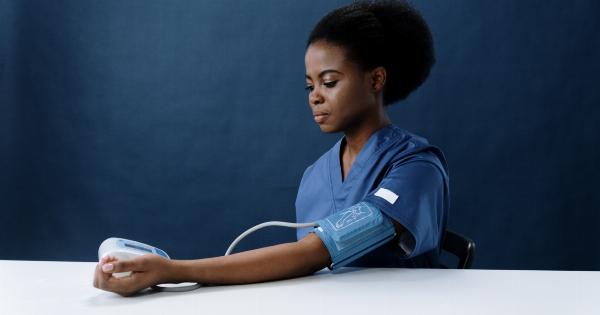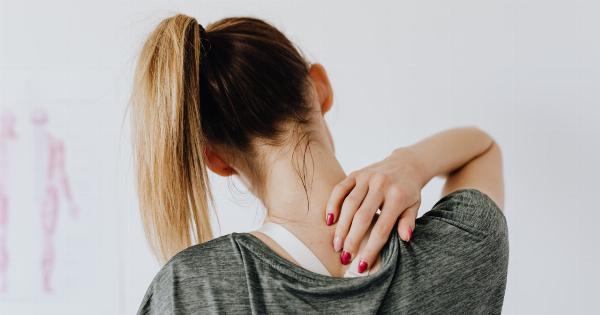Orthostatic hypotension is a condition characterized by a sudden drop in blood pressure when a person stands up from a seated or lying position. This drop in blood pressure can cause symptoms such as dizziness, lightheadedness, fainting, and even falls.
It occurs due to the failure of the autonomic nervous system to adequately adjust and regulate blood flow in response to changes in body position.
Symptoms of Orthostatic Hypotension
The symptoms of orthostatic hypotension can vary from mild to severe, depending on the individual and the underlying cause. Some common symptoms include:.
- Dizziness
- Lightheadedness
- Fainting or near fainting (syncope)
- Blurred vision
- Weakness or fatigue
- Nausea
- Headaches
Causes of Orthostatic Hypotension
Orthostatic hypotension can be caused by various factors, including:.
- Dehydration
- Medications (such as high blood pressure medications, diuretics, antipsychotics)
- Neurological conditions (such as Parkinson’s disease, multiple system atrophy)
- Heart conditions (such as heart failure, heart valve problems)
- Endocrine disorders (such as adrenal insufficiency, diabetes)
- Anemia
- Excessive alcohol consumption
Diagnosis of Orthostatic Hypotension
To diagnose orthostatic hypotension, a healthcare professional may perform the following:.
- Medical history review
- Physical examination
- Blood pressure measurements in different positions (lying down, sitting, standing)
- Tilt-table test
- Additional tests may be ordered to identify the underlying cause
Management of Orthostatic Hypotension
While orthostatic hypotension can be challenging to manage, there are several fast and effective tips that can help alleviate symptoms and improve quality of life:.
1. Increase Fluid Intake
Staying well-hydrated can help prevent or reduce episodes of orthostatic hypotension. It is recommended to drink plenty of fluids throughout the day, particularly water.
Aim for at least 8 to 10 glasses per day, unless there are specific fluid restrictions advised by a healthcare professional.
2. Avoid Alcohol
Alcohol can worsen orthostatic hypotension symptoms, so it is best to avoid or limit its consumption. It can cause further dehydration and interfere with blood pressure regulation.
3. Avoid Hot Environments
Exposure to hot environments can exacerbate symptoms of orthostatic hypotension. It is important to avoid hot baths, saunas, or prolonged sun exposure, especially during warmer months.
It is also helpful to wear loose and breathable clothing to prevent overheating.
4. Gradual Position Changes
Rather than making sudden movements, it is recommended to perform slow and deliberate position changes. When transitioning from lying down to sitting or standing, take your time and allow your body to adjust.
This can prevent sudden drops in blood pressure.
5. Use Compression Stockings
Compression stockings are specially designed stockings that apply pressure to the legs, helping to improve circulation and prevent blood pooling. They can be particularly beneficial for individuals with orthostatic hypotension.
Consult with a healthcare professional to determine the appropriate level of compression and the best type of stockings for your situation.
6. Medication Review
If you are taking medications that could contribute to orthostatic hypotension, it is essential to discuss this with your healthcare professional.
They may adjust dosages, switch medications, or provide alternative treatment options to help manage your symptoms.
7. Sleep with Head Elevated
Elevating the head of the bed can help prevent blood from pooling in the legs and lower extremities during nighttime sleep. Use pillows or adjustable beds to raise the head to a comfortable and supportive position.
8. Increase Dietary Sodium
In some cases, increasing the intake of dietary sodium may be recommended to help raise blood pressure. This should be done under the guidance of a healthcare professional, as excessive sodium intake can have negative effects on overall health.
Aim for a well-balanced diet that includes healthy sources of sodium.
9. Regular Exercise
Engaging in regular exercise can help improve cardiovascular health and promote better blood pressure regulation.
However, it is important to consult with a healthcare professional before starting or modifying an exercise routine, as certain activities may be more suitable than others for individuals with orthostatic hypotension.
10. Monitor Blood Pressure
Regular monitoring of blood pressure can help individuals with orthostatic hypotension keep track of any changes or fluctuations. This information can be shared with healthcare professionals for better management and adjustment of treatment plans.































